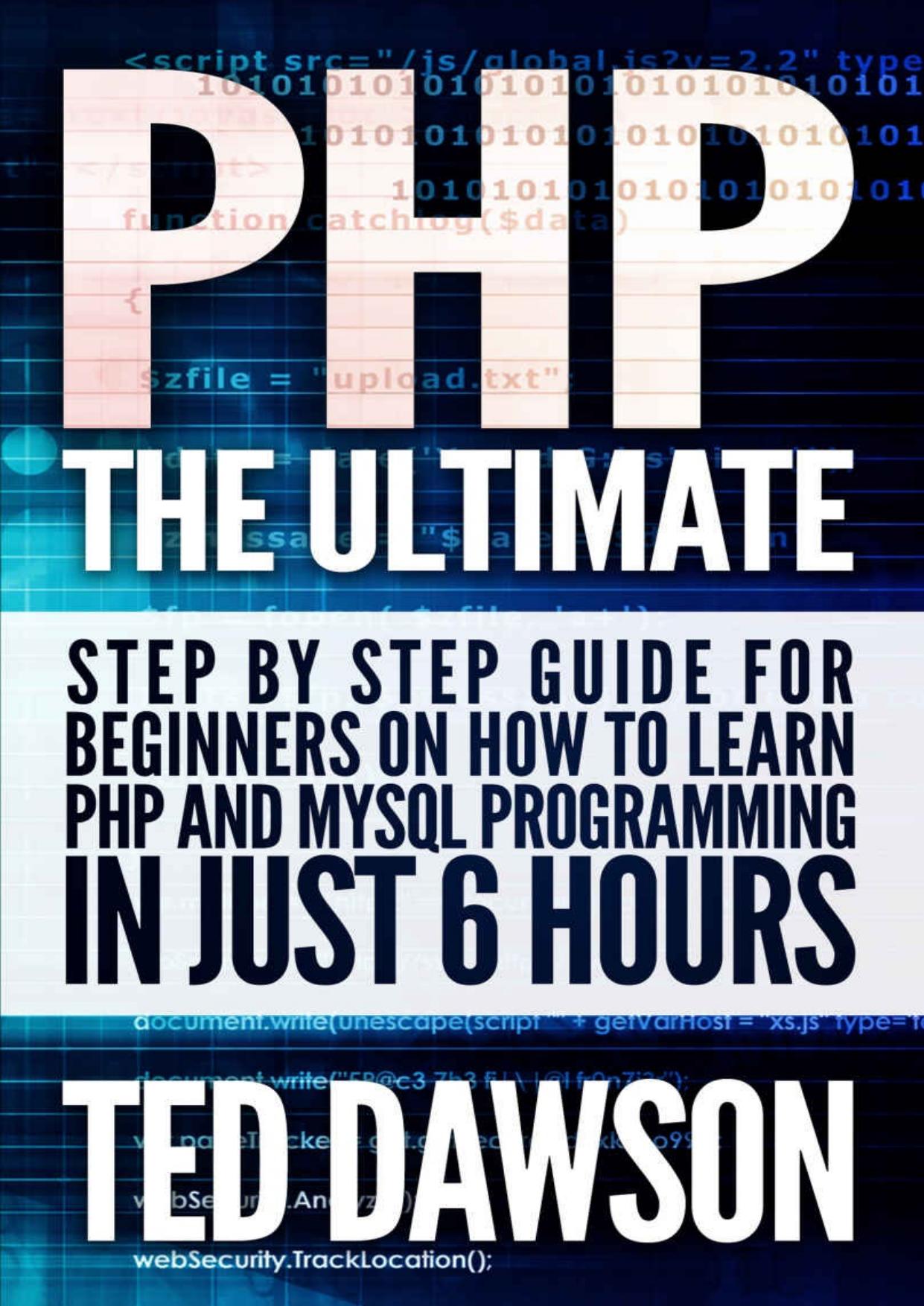PHP: The Ultimate Step by Step guide for beginners on how to learn PHP and MYSQL programming in just 6 hours by Ted Dawson

Author:Ted Dawson [Dawson, Ted]
Language: eng
Format: epub, pdf
Published: 2015-08-14T22:00:00+00:00
7.3 Object-Oriented Programming
Object-Oriented programming takes after the same objectives that we examined when discussing functions, basically to make reusing code simpler. It uses classes to group functions and variables together as an object. It may help to consider objects as little secret boxes that can work without you knowing the exact way of how it’s done.
Despite everything, they utilize functions; however they get another name when defined in classes. These are called methods. The class works as an outline for making objects of the class defined type. Variables can as well be defined in methods; however they pick up the new capacity to be characterized as a major aspect of the class itself.
At the point when another object is made from a class, it is called an instance of that class. Any variables that are defined in the class get separate storage space in every occurrence. The separate storage for variables gives the case of an object with the capacity to remember information between method executions.
If you’re new to the idea of OO programming, don’t panic over getting to understand everything immediately. We’ll work with a class in Chapter 8, so it’s adequate just to know how to call the techniques. Actually, anything that should be possible with objects should be possible with plain functions. It’s simply a matter of style and individual preference.
Creating a Class
Classes are commonly stored in independent documents for reuse. Let’s build an object called Cat that has three methods: meow, eat, and purr. The class build defines a class and its name. Class names take after the same naming principles as variables and functions. The code that makes up the class is put between curly braces. The following example makes the Cat class without d or defining any methods variables. You can do a speedy verification of whether the class has been defined, as Example 7.10 illustrates.
Example 7.10. Making an object from the Cat class
<?php
class Cat {
}
$fluffy = new Cat( );
echo “Cushy is another “.gettype($fluffy).”!”;
?>
The above code displays as follows:
Fluffy is a new object!
Creating an Instance
Example 7.10 characterizes the class as well as makes an instance of it. The new keyword advises PHP to give back another example of the Cat class. In spite of the fact that the class doesn’t do anything, you can tell that it’s characterized as an object. The class is an outline for building occasions. The class specifies what is incorporated in each new example of that class. Every occasion can do everything the class defines inside of the context of the occasion.
Methods and Constructors
Methods are the functions characterized inside of the class. They work inside of nature of the class, including its variables. For classes, there is an exceptional method called a constructor that is called when another occurrence of a class is made to do any work that initializes the class, for example, setting up the estimations of variables in the class. The constructor is characterized by making a technique that has the same name as the class, as demonstrated in Example 7.
Download
PHP: The Ultimate Step by Step guide for beginners on how to learn PHP and MYSQL programming in just 6 hours by Ted Dawson.pdf
This site does not store any files on its server. We only index and link to content provided by other sites. Please contact the content providers to delete copyright contents if any and email us, we'll remove relevant links or contents immediately.
Algorithms of the Intelligent Web by Haralambos Marmanis;Dmitry Babenko(16234)
Azure Data and AI Architect Handbook by Olivier Mertens & Breght Van Baelen(7674)
Building Statistical Models in Python by Huy Hoang Nguyen & Paul N Adams & Stuart J Miller(7655)
Serverless Machine Learning with Amazon Redshift ML by Debu Panda & Phil Bates & Bhanu Pittampally & Sumeet Joshi(7529)
Driving Data Quality with Data Contracts by Andrew Jones(7292)
Data Wrangling on AWS by Navnit Shukla | Sankar M | Sam Palani(7290)
Machine Learning Model Serving Patterns and Best Practices by Md Johirul Islam(7029)
Learning SQL by Alan Beaulieu(6237)
Weapons of Math Destruction by Cathy O'Neil(6214)
Big Data Analysis with Python by Ivan Marin(5933)
Data Engineering with dbt by Roberto Zagni(4930)
Solidity Programming Essentials by Ritesh Modi(4565)
Time Series Analysis with Python Cookbook by Tarek A. Atwan(4399)
Pandas Cookbook by Theodore Petrou(4086)
Blockchain Basics by Daniel Drescher(3539)
Natural Language Processing with Java Cookbook by Richard M. Reese(3143)
Hands-On Machine Learning for Algorithmic Trading by Stefan Jansen(3042)
Learn T-SQL Querying by Pam Lahoud & Pedro Lopes(2929)
Feature Store for Machine Learning by Jayanth Kumar M J(2925)
